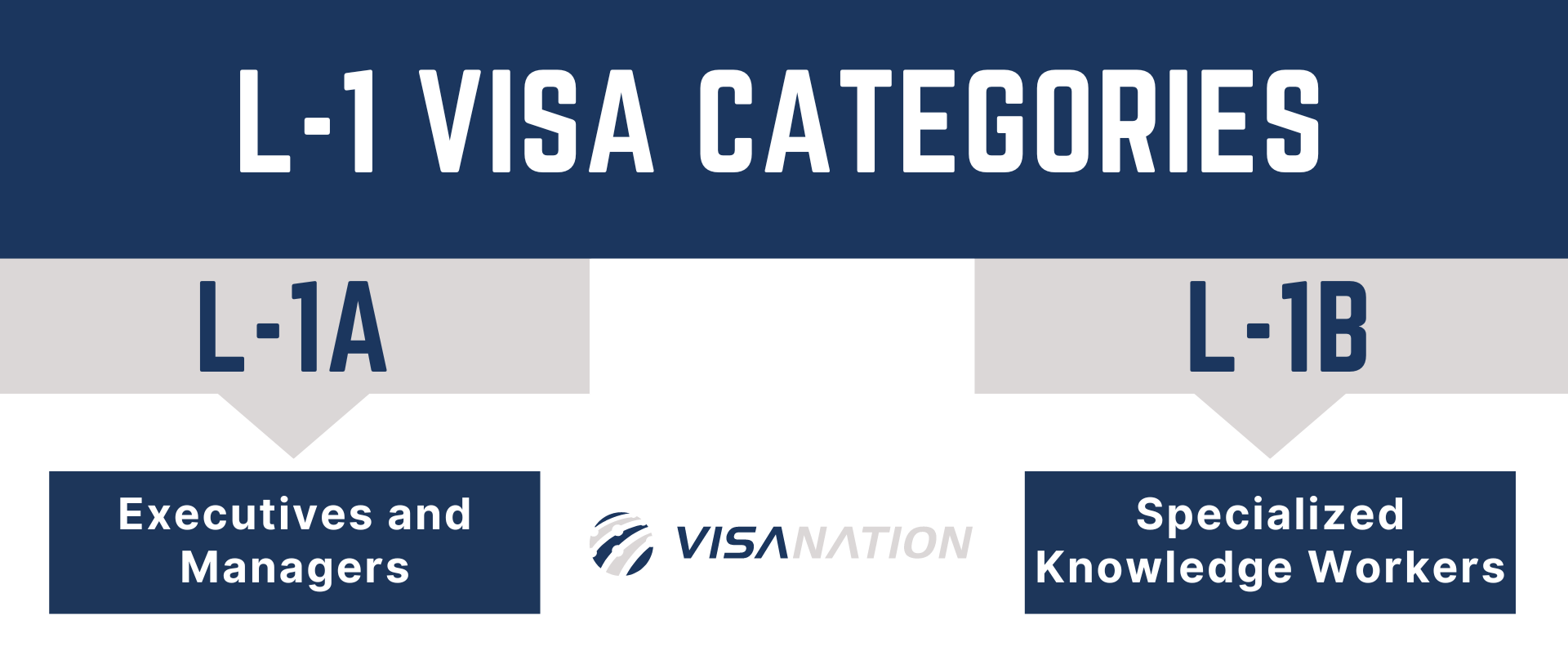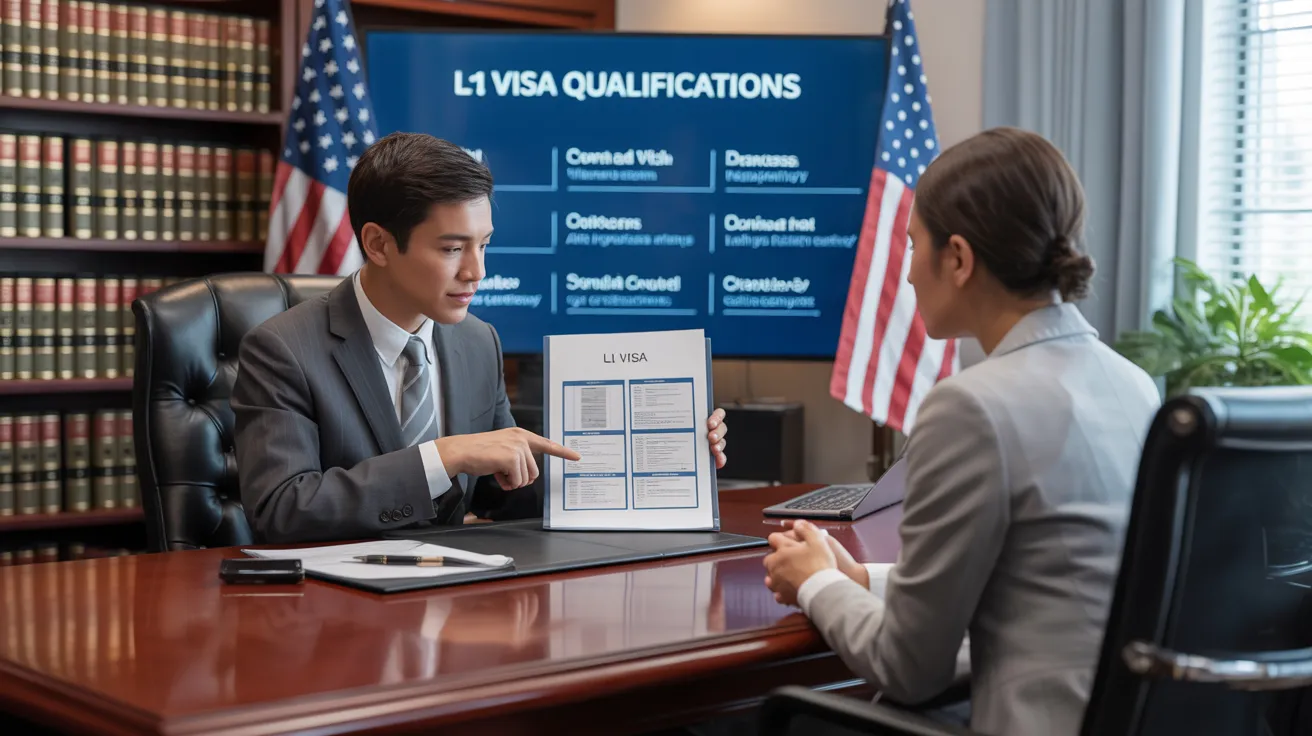L1 Visa Attorney Support
Whatever You Need to Know About the L1 Visa: Benefits, Needs, and More
The L1 Visa functions as an important tool for international business seeking to move workers to the USA, promoting both operational performance and the transfer of specialized understanding. With distinct classifications for execs and specialized experts, this visa presents many benefits, consisting of possible paths to permanent residency. Recognizing the qualification demands and application procedure is vital for a successful shift. As we examine the complexities of the L1 Visa, it becomes clear that navigating its complexities is extremely important for organizations aiming to take advantage of global ability efficiently. What difficulties might you experience in the process?
Introduction of the L1 Visa

Kinds of L1 Visas

Numerous kinds of L1 visas provide to the varied requirements of international firms seeking to move workers to the United States. Both main categories of L1 visas are L1A and L1B, each developed for specific functions and duties within an organization. L1 Visa.The L1A visa is meant for supervisors and executives. This classification permits companies to transfer individuals who hold managerial or executive settings, allowing them to manage operations in the U.S. This visa is legitimate for a preliminary period of approximately 3 years, with the opportunity of extensions for a total of approximately 7 years. The L1A visa is particularly beneficial for firms looking for to develop a solid leadership existence in the united state market.On the other hand, the L1B visa is designated for staff members with specialized expertise. This includes people who have advanced competence in details locations, such as exclusive modern technologies or unique processes within the company. The L1B visa is additionally valid for an initial three-year period, with extensions offered for up to five years. This visa category is excellent for firms that call for staff members with specialized skills to improve their operations and maintain an one-upmanship in the U.S.Both L1A and L1B visas permit for twin intent, suggesting that visa owners can get permanent residency while on the visa. Understanding the distinctions in between these two groups is important for businesses intending to browse the complexities of staff member transfers to the USA successfully
Eligibility Requirements
To receive an L1 visa, both the company and the worker have to meet particular eligibility requirements set by U.S. immigration authorities. The L1 visa is designed for intra-company transferees, permitting international business to transfer staff members to their U.S. offices.First, the employer must be a certifying organization, which indicates it must have a parent firm, branch, subsidiary, or affiliate that is operating both in the united state and in the foreign nation. This connection is necessary for demonstrating that the worker is being transferred within the very same corporate framework. The employer has to likewise have been doing service for a minimum of one year in both locations.Second, the worker must have been utilized by the international company for at the very least one constant year within the 3 years preceding the application. This work must remain in a supervisory, executive, or specialized understanding ability. For L1A visas, which accommodate managers and executives, the employee should demonstrate that they will certainly proceed to run in a similar ability in the U.S. For L1B visas, meant for employees with specialized knowledge, the private need to have one-of-a-kind know-how that adds significantly to the business's procedures.
Application Process
Maneuvering the application procedure for an L1 visa entails a number of vital actions that have to be finished properly to guarantee an effective result. The primary step is to establish the suitable group of the L1 visa: L1A for supervisors and execs, or L1B for workers with specialized understanding. This distinction is significant, as it impacts the paperwork required.Once the classification is recognized, the U.S. company must submit Type I-129, Request for a Nonimmigrant Worker. This kind must consist of detailed details about the firm, the worker's duty, and the nature of the work to be carried out in the united state Accompanying documents usually includes proof of the connection between the U.S. and international entities, proof of the staff member's certifications, and information concerning the task offer.After submission, the U.S. Citizenship and Migration Provider (USCIS) will review the petition. If authorized, the worker will be alerted, and they can then obtain the visa at an U.S. consular office or embassy in their home nation. This entails finishing Kind DS-160, the Online Nonimmigrant copyright, and arranging an interview.During the interview, the candidate needs to offer numerous files, including the authorized Type I-129, proof of employment, and any extra supporting evidence. Following the interview, if the visa is given, the worker will certainly receive a visa stamp in their ticket, enabling them to enter the U.S. to benefit the sponsoring company. Correct preparation and detailed paperwork are crucial to navigating this procedure effectively.
Benefits of the L1 Visa
Among the remarkable benefits of the L1 visa is its ability to facilitate the transfer of crucial workers from international workplaces to the United States. This visa is particularly advantageous for international companies looking for to maintain uniformity in procedures and leadership throughout borders. By permitting executives, supervisors, and specialized workers to operate in the U.S., companies can guarantee that their most necessary skill is readily available to drive service objectives.Another substantial benefit of the L1 visa is its relatively uncomplicated application procedure compared to various other work visas. Organizations can petition for the L1 visa without the need for a labor qualification, which streamlines the recruitment of international staff members. The visa can be approved for a first period of up to three years, with the possibility of extensions, helping with long-lasting assignments.The L1 visa also provides a course to irreversible residency. Employees on L1A visas (for supervisors and execs) can request a copyright after one year, expediting their adjustment to irreversible standing. This feature is an appealing reward for skilled people trying to find security in the united state workforce.Additionally, L1 visa owners can bring their prompt household participants to the united state under L2 standing, permitting partners and kids to live and research in the nation, improving the general charm of this visa classification. On the whole, the L1 visa offers as a necessary tool for global organizations, promoting cross-border partnership and talent wheelchair.
Typical Difficulties
While the L1 visa supplies many benefits for international firms and their workers, it is not without its challenges. One remarkable obstacle is the stringent documents and eligibility needs enforced by the U.S. Citizenship and Migration Provider (USCIS) Business have to offer in-depth evidence of the foreign employee's credentials, the nature of the service, and the qualifying partnership between the united state and foreign entities. This procedure can be time-consuming and might require lawful know-how to navigate successfully.Another difficulty is the capacity for scrutiny throughout the application procedure. USCIS policemans may examine the authenticity of the service operations or the employee's function within the company. This scrutiny can result in delays or perhaps rejections of the copyright, which can significantly influence the company's operational plans and the employee's occupation trajectory.Furthermore, the L1 visa is linked to the sponsoring company, which means that task modifications can make complex the visa standing. If an L1 visa owner wants to switch companies, they have to frequently seek a various visa group, which can add complexity to their immigration journey.Lastly, keeping conformity with L1 visa laws is important. Employers need to assure that their employee's role aligns with the initial request which business remains to fulfill the qualification needs. Failure to do so can cause abrogation of the visa, impacting both the staff member and the company. These obstacles require thorough preparation and recurring management to guarantee a successful L1 visa experience.
Tips for Success
To efficiently navigate the L1 visa procedure, thorough prep work is essential. Start by thoroughly understanding the specific needs for the L1 visa group you are using for, whether L1A for managers and executives or L1B for staff members with specialized knowledge. Collect all needed paperwork early while doing so, including evidence of your employment background, business framework, and the nature of business operations.Engage lawful advice experienced in migration law to guide you through the ins and outs of the application. An attorney can assist ensure that your application is total, accurate, and compelling. They can additionally aid in preparing for prospective demands for evidence (RFEs) by proactively addressing locations that may increase questions.Additionally, preserve clear interaction with your employer, who need to supply vital assistance for your application. L1 Visa. Validate that they comprehend their duties, including filing the required applications and giving documentation that substantiates your duty in the organization.Prepare for the visa interview by practicing answers to common inquiries concerning your expert history and the nature of your employment. Showing confidence and clearness can significantly impact the end result of your application
Regularly Asked Inquiries
Can Family Members Accompany L1 Visa Holders?
Yes, member of the family can come with L1 visa owners. Partners and single children under 21 years of ages are eligible for L2 visas, which allow them to live and study in the USA throughout the L1 owner's remain.
How Much Time Can L1 Visa Owners Remain in the U.S.?
L1 visa owners can at first remain in the U.S. for as much as three years (L1 Visa). This period might be prolonged, allowing an optimum keep of seven years for L1A visa owners and 5 years for L1B visa holders
Is the L1 Visa a Twin Intent Visa?

Can L1 Visa Owners Use for a Permit?
Yes, L1 visa holders can request a permit - L1 Visa. The L1 visa supports double intent, allowing holders to seek permanent residency while preserving their non-immigrant standing, helping with a smoother changeover to an environment-friendly card
What Happens if an L1 copyright Is Rejected?
If an L1 copyright is rejected, the candidate might get a notification detailing the factors for rejection. L1 Visa. They can appeal the decision, reapply, or discover alternative visa choices depending on their scenarios and credentials
Conclusion
In summary, the L1 Visa acts as a crucial instrument for multinational business seeking to transfer employees to the United States. Recognizing the differences in between L1A and L1B categories, in addition to the eligibility requirements and application processes, is essential for successful navigation of this non-immigrant category. The benefits provided, including streamlined applications and pathways to permanent residency, additionally boost its appeal. Dealing with typical obstacles properly can lead to a much more beneficial result in the copyright process.